People
Textile Artist Sarah Zapata Has More Than One Identity. Weaving Lets Her Bring Them All Together
The artist's work, which has already garnered institutional interest, is now heating up on the market.
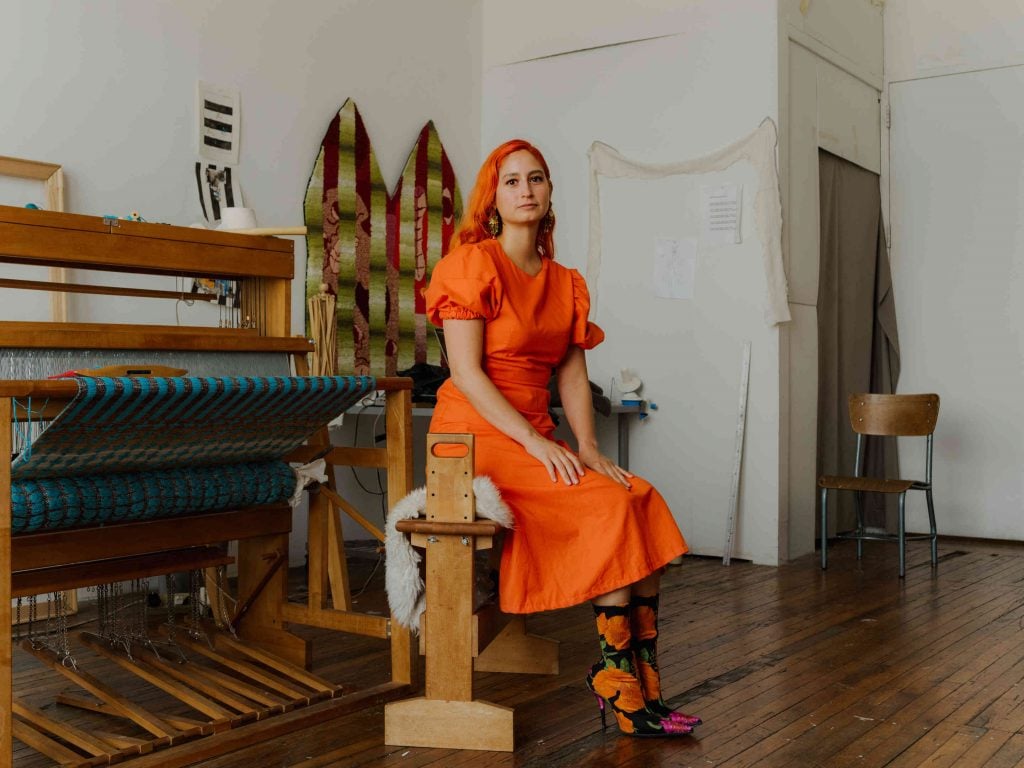
The artist's work, which has already garnered institutional interest, is now heating up on the market.

Nicole Martinez

When artist Sarah Zapata takes a seat at her loom and gently places her foot on its pedals to begin weaving, music is essential.
“It’s all about music because I’m measuring how fast I’m completing a row and trying to get into the rhythm of it,” she told Artnet News.
Allotting herself two to three songs within which to complete one pattern row, Zapata careens smoothly across the reed as she gently taps the pedals to set her pace, like a pianist might deliver the notes of their score.
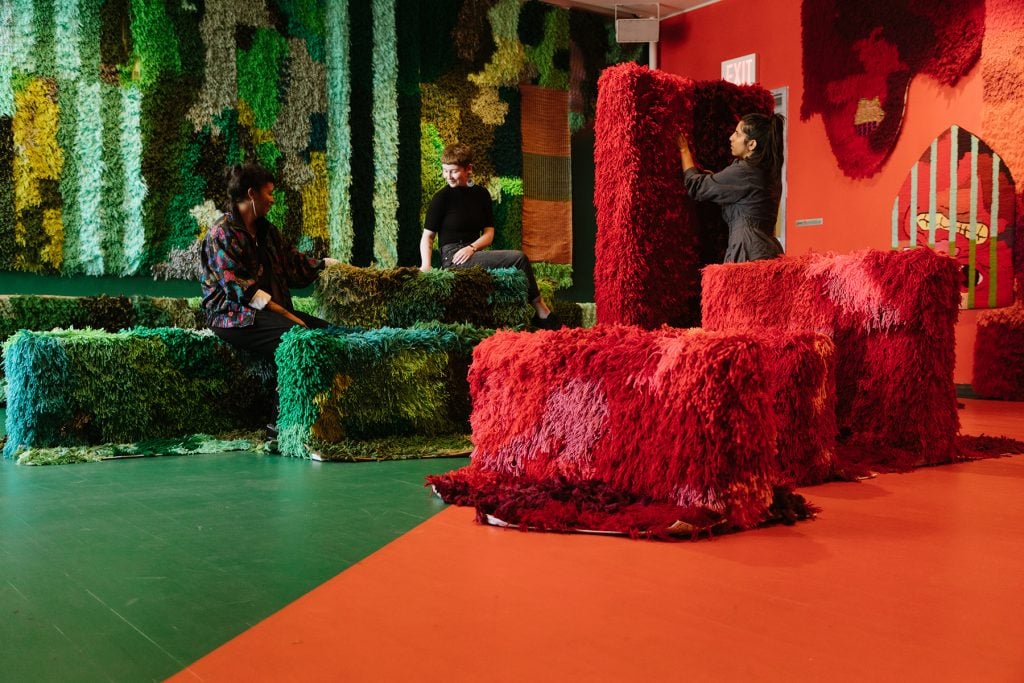
Sarah Zapata, A Famine of Hearing (2019) at Performance Space, New York. Courtesy of the artist.
The resulting works—large, colorful, architecturally textured sculptures—are nothing short of operatic. In tapping into her own cultural background and family history (Zapata was born in Texas to a Peruvian father and an evangelical Christian mother who sings opera and is a classically trained pianist), Zapata creates sculptures that both uplift these traditions and subvert them.
Grounded in research exploring the Bible, craft, and systems of control, Zapata uses loud, celebratory colors and works at large-scale to make art that is “an unapologetic and ominous presence around the viewer,” she said.
“Instead of being diminutive as ‘women’s work,’ it’s about taking up as much space as possible,” she said.
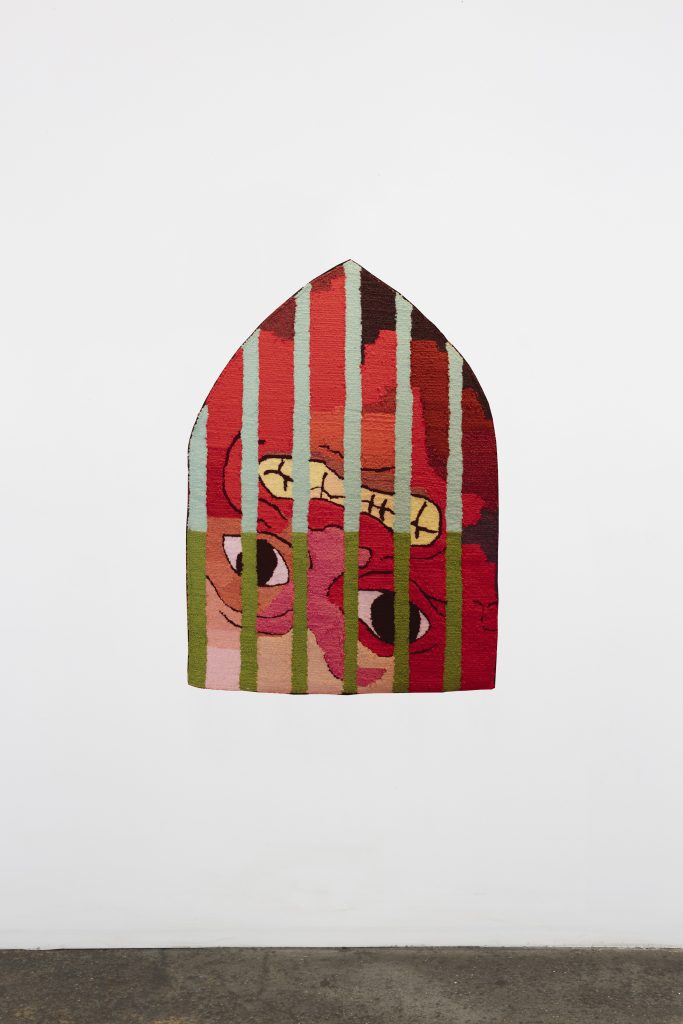
Sarah Zapata, At one Time I (2019). Courtesy the artist and Deli Gallery, New York.
Zapata, who studied fibers at the University of North Texas and shortly thereafter moved to Brooklyn, where she currently works and lives, was relatively unknown before 2017. Since then, she’s earned a number of awards, shows, and institutional acquisitions: an installation at El Museo del Barrio in New York; a group show at BRIC in Brooklyn; a solo show at the Ogden Museum of Art in New Orleans; and the acquisition of her work by the Museum of Art and Design in New York and the Museo de Arte de Lima de Peru.
The market is following in institutional footsteps.
According to gallerist Max Marshall of Deli Gallery in New York, which represents the artist, Zapata’s work commands between $6,000 to $18,000 and has entered private and public collections in New York, Baltimore, Los Angeles, and South America.
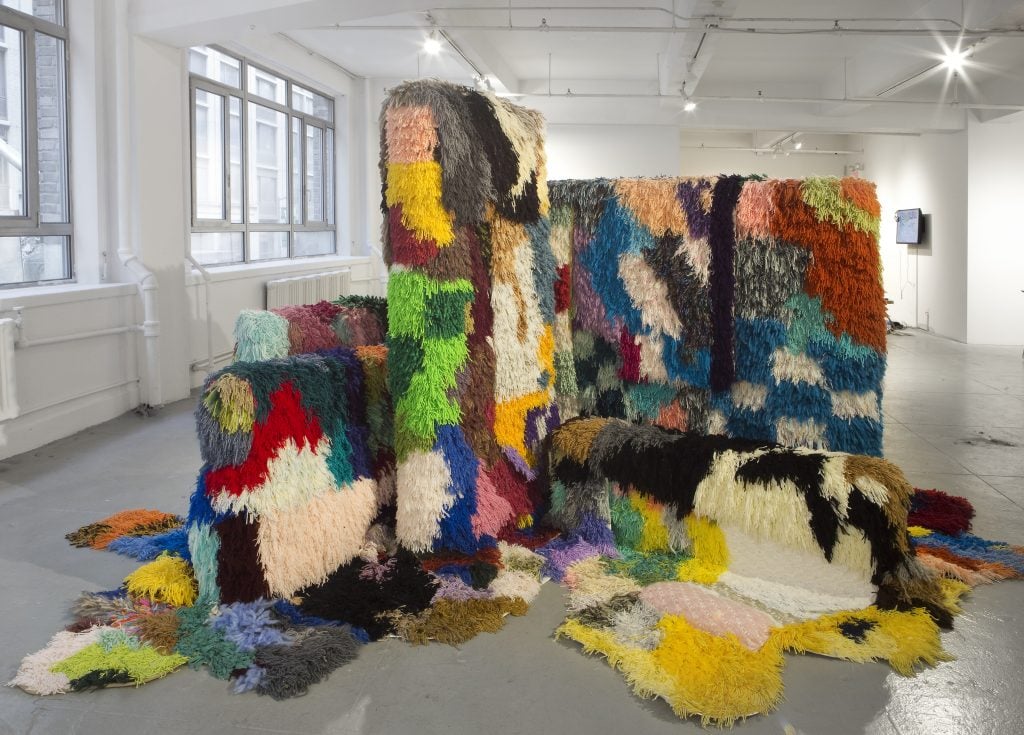
Sarah Zapata, To Teach or Assume Authority (2018–19). Courtesy the artist and Deli Gallery, New York.
“I think it’s valuable to think about Sarah’s work in dialogue with other contemporary artists who draw from craft and popular traditions,” said BRIC chief curator Elizabeth Ferrer, who worked with Zapata on the exhibition “Latinx Abstract.”
“I’m thinking of figures like Justin Favela, who creates installations and wall works using the piñata technique, the ceramicist Robert Lugo, or Sandy Rodriguez, whose map-based imagery is based in pre-Columbian codices and are painted on papel de amate. Like Sarah, all these artists are paying homage to traditional forms of art-making, but in doing so, they are also making a political statement about the value and power of indigenous forms of creative production, and about their own personal ties to ancient legacies.”
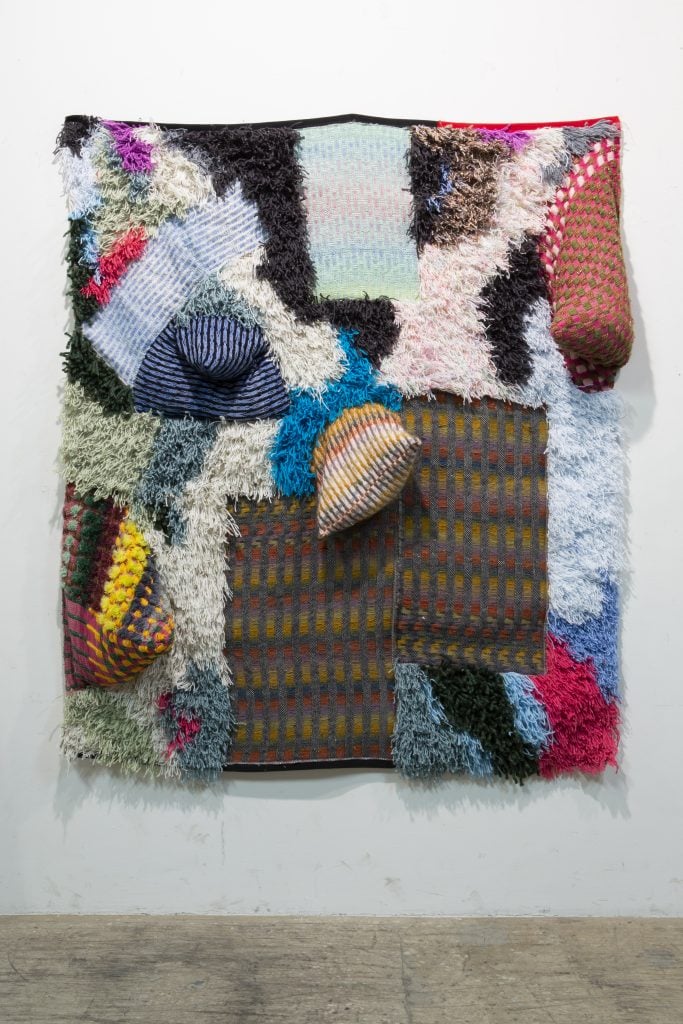
Sarah Zapata, yet to be titled (2022). Courtesy the artist and Deli Gallery, New York.
Zapata’s interest in textiles springs from an early interest in fabric and fibers. “When I was a kid, I felt like I had little agency or control, but I found that I could control how I adorned my body,” she said. “So I made my own clothes with hot glue, painting them and adorning my body I way I wanted to.” Over time, as she delved her artistic practice, Zapata understood the work as a way to reconfigure her relationship with her identity.
“Thinking about my cultural lineages, in Christianity, a woman who works with yarn honors god, and Peru has a rich history in textiles,” she said. “I could navigate both and neither in this way on my own terms. Weaving fulfilled a lot of mental emotional and physical desires.”
Her earliest works used telephone-book paper as the basis for large woven works. In these earthen-toned sculptures, Zapata began experimenting with architectural forms. But Zapata was apprehensive about using too much color, afraid it wouldn’t be considered “tasteful” and that her color sense “was just not good.” But moving to New York made Zapata get creative with materials.
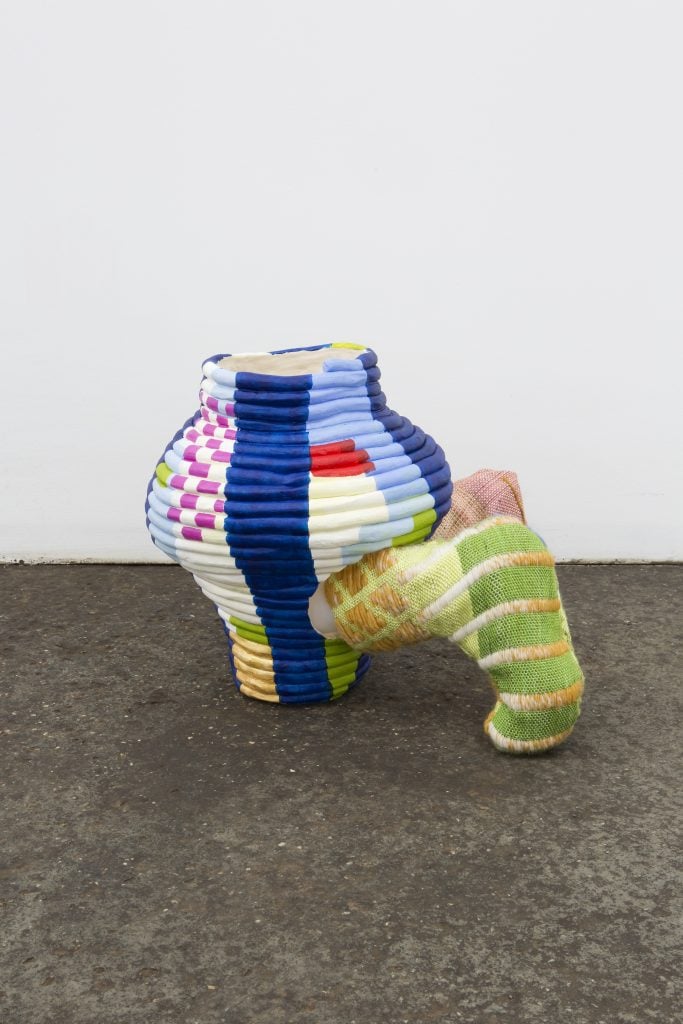
Sarah Zapata, I want you to know how hard I am III (2019). Courtesy the artist and Deli Gallery, New York.
“When I came to New York, I was broke and I had to think about what was easiest to get materials wise,” Zapata said. “I was working for a yarn company and they were just throwing away yarn all the time. I was hoarding it like a squirrel, just like taking it all. And suddenly I have this crazy range of colors. So it kind of was just out of necessity.”
Zapata, Ferrer said, found a way “to be a truly bold, risk-taking artist who is pushing certain traditions to an extent that she’s articulating something very new. It integrates aspects of pre-Columbian forms and craft processes but she frees herself from creating work that is a form of appropriation or homage.”
If you ask Zapata, her work ethic is driven by a hard-won journey of acceptance, and a deep sense of gratitude for where it’s led her.
“You get to that point in your life where you’re like, I need to stop trying to be something I’m not, I just have to own who I am,” Zapata said. “I’m very thankful to be here.”